
Above: Ålesund harbour in the centre of town with Art Nouveau buildings on both sides.
The port of Ålesund was established as a municipality on 1 January 1838 and it received town rights in 1848. Today, the town has a population of about 40,000 and it is a popular destination for cruise ships. One of the main attractions is Mount Aksla, a prominent hill in the centre of town which affords great views at the top.
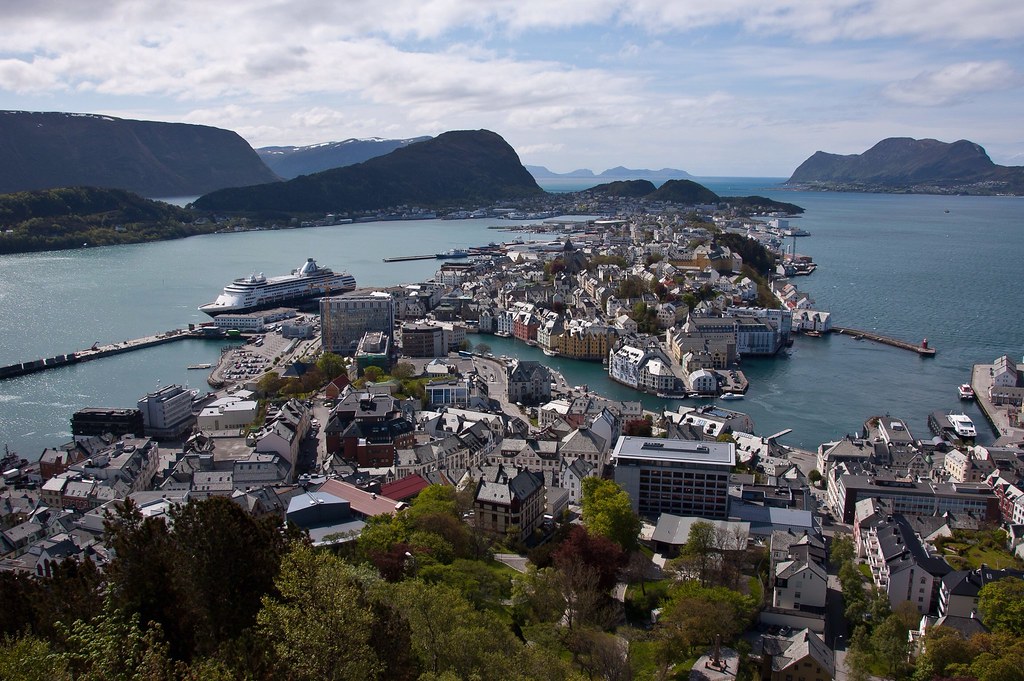
Above: The view from the top of Mount Aksla. There are over 400 steps to climb to reach the summit.
From across the harbour, you get a great view of Mount Aksla and the observation centre on top of the hill.
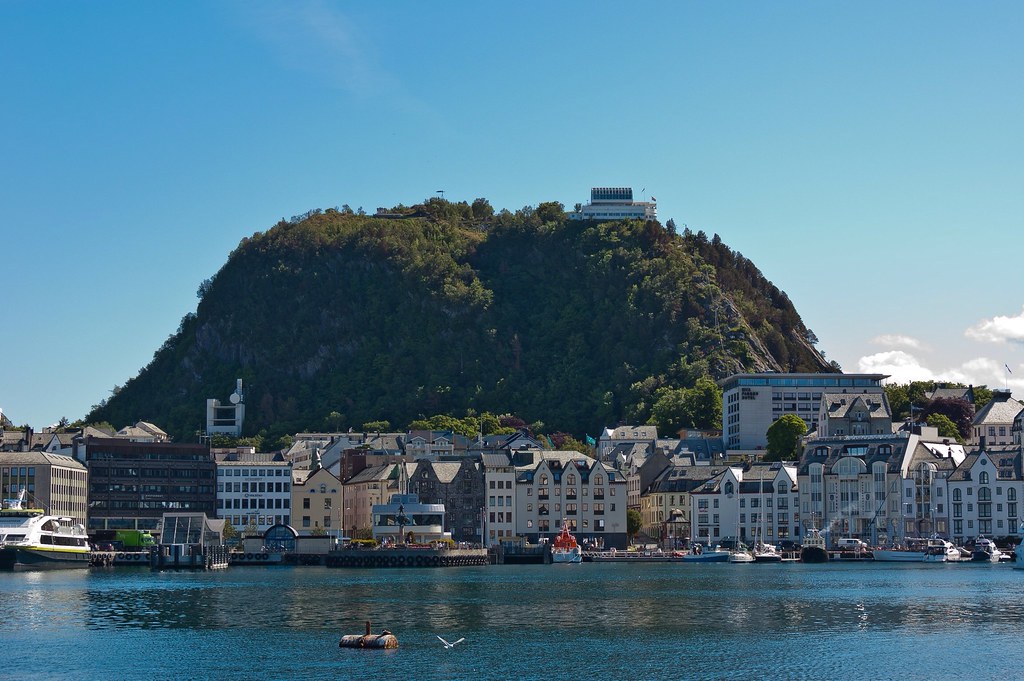
Above: The view of Mount Aksla from across the harbour.
Our first visit to Ålesund took place on May 17th which is Norway's Constitution Day. On this day Norwegians fill the streets with cheers and flags in celebration of the adoption of the Norwegian constitution in 1814. I watched a parade made up of marching bands and local school children wind through the centre of town with local residents dressed in their best watching on, many of them in the national costume known as the bunad.
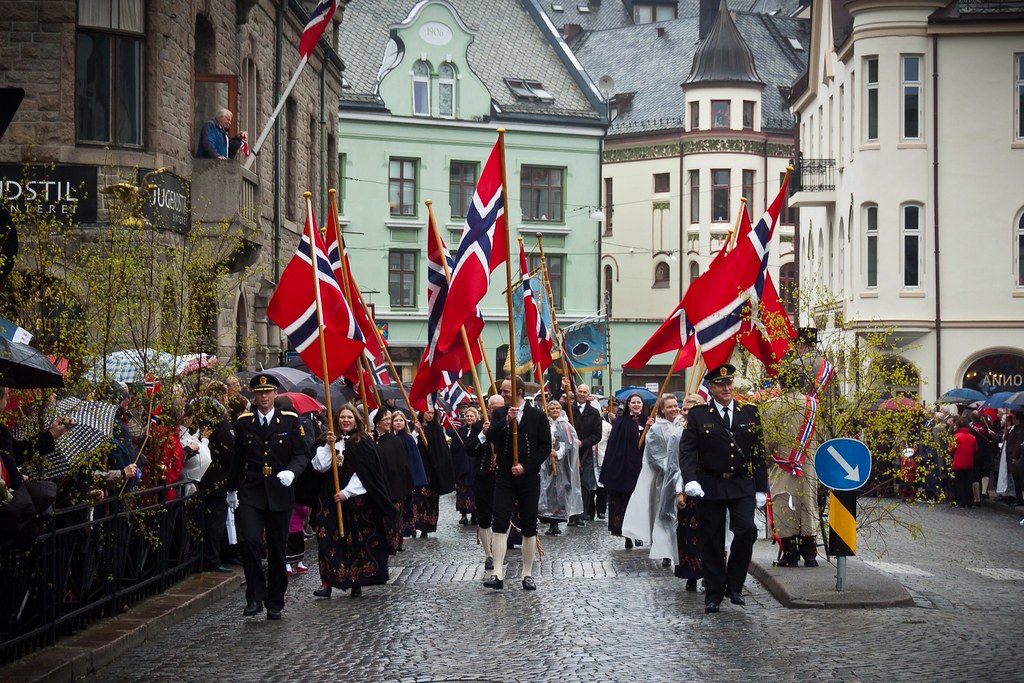
Above: Constitution Day parade in Ålesund.
On the night of 23 January 1904, the town was the scene of the Ålesund Fire, one of the most terrible of the many fires to which Norwegian towns, once built largely of wood, have been subjected. Practically the entire town was destroyed during the night, a gale aiding the flames, and the population had to leave the town in the middle of the night with only a few minutes' notice. Only one person died in the fire but more than 10,000 people were left without shelter.

Above: Alesund at night.
800 houses burned down, and the source of the fire was believed to have been started in the Canning Factory with a dropped Paraffin Lamp. Today the Canning Factory is a museum which tourists can visit.
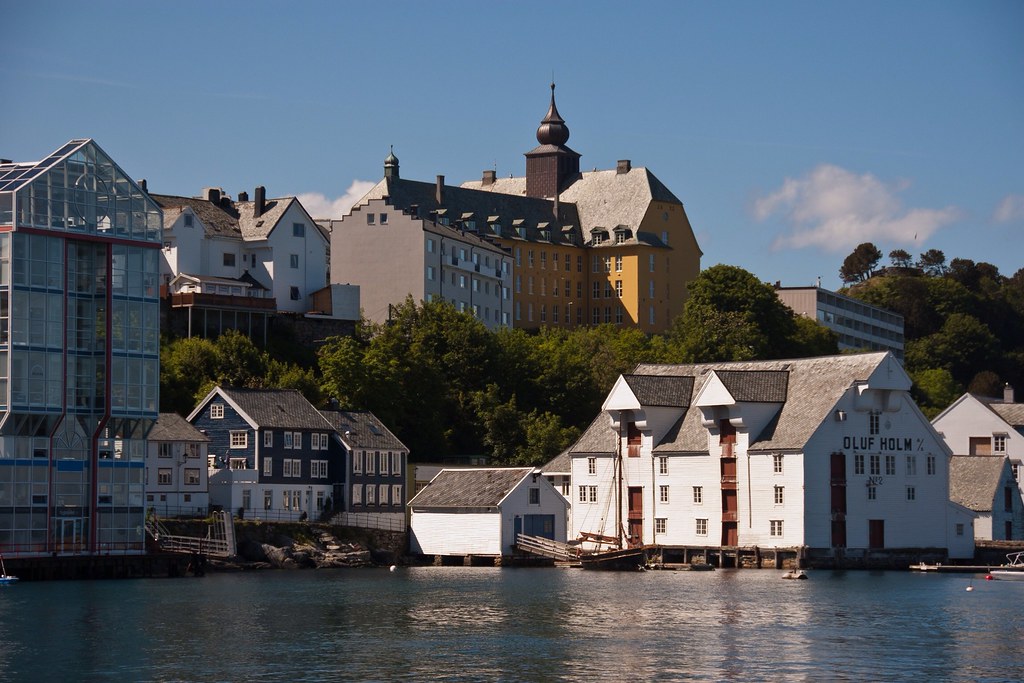
Above: The Canning Factory on the right of the picture. Note the overhanging roofs which had pulley systems to carry fish from the harbour into the building. The yellow building behind is a school.
After a period of planning, the town was rebuilt in stone, brick, and mortar in Jugendstil (Art Nouveau), the architectural style of the time. The structures were designed by approximately 20 master builders and 30 Norwegian architects, most of them educated in Trondheim and Berlin, drawing inspiration from all over Europe.
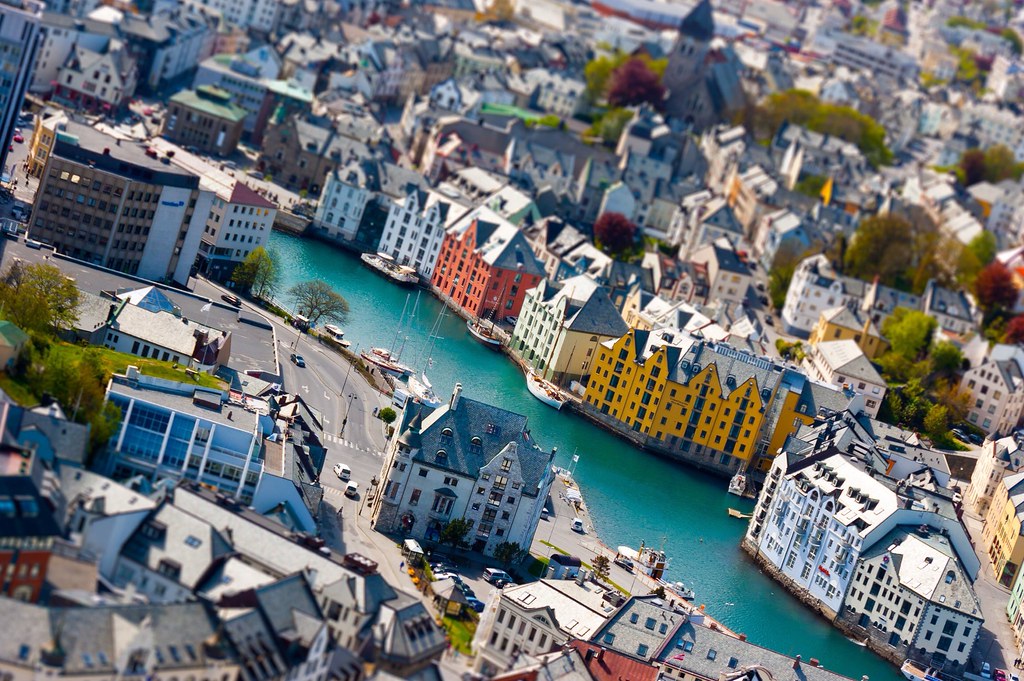
Above: The centre of town was rebuilt in Art Nouveau style.
The town has an unusually consistent architecture, most of the buildings having been built between 1904 and 1907. The Art Nouveau style was at its peak at the turn of the 20th Century with the Eifel Tower being an example of the style and the Helsinki Railway Station (see previous post) being the final important example of the style, built in 1918.

Above: A different view of Ålesund from the top of Mount Aksla.
During WWII 3,500 residents of the town fled to England - you could make Kings Cross in 3 days by taking a boat to the Shetland Islands and travelling by train down to London. There is a statue in the harbour which is dedicated to the families who fled the town during the War. Ålesund has the most important fishing harbour in Norway and the town's fishing fleet is one of the most modern in Europe.

Above: Street musicians performing along the most famous street in Ålesund.
During one of my visits to Ålesund I took a shore excursion to the islands of Giske and Godoy. Many of the islands in this part of Norway are linked by some of the world's longest sub-marine tunnels which travel deep under the fjords. Some of the tunnels are so deep that they are constructed in a helix shape so that the road can travel beneath the fjord within a relatively short distance.
The island of Giske is known as the birthplace of the famous Viking King Gangerolv, or Rollo, who conquered Normandy in 911. On this island we visited Giske Chapel - a Roman marble church dating from 1135.
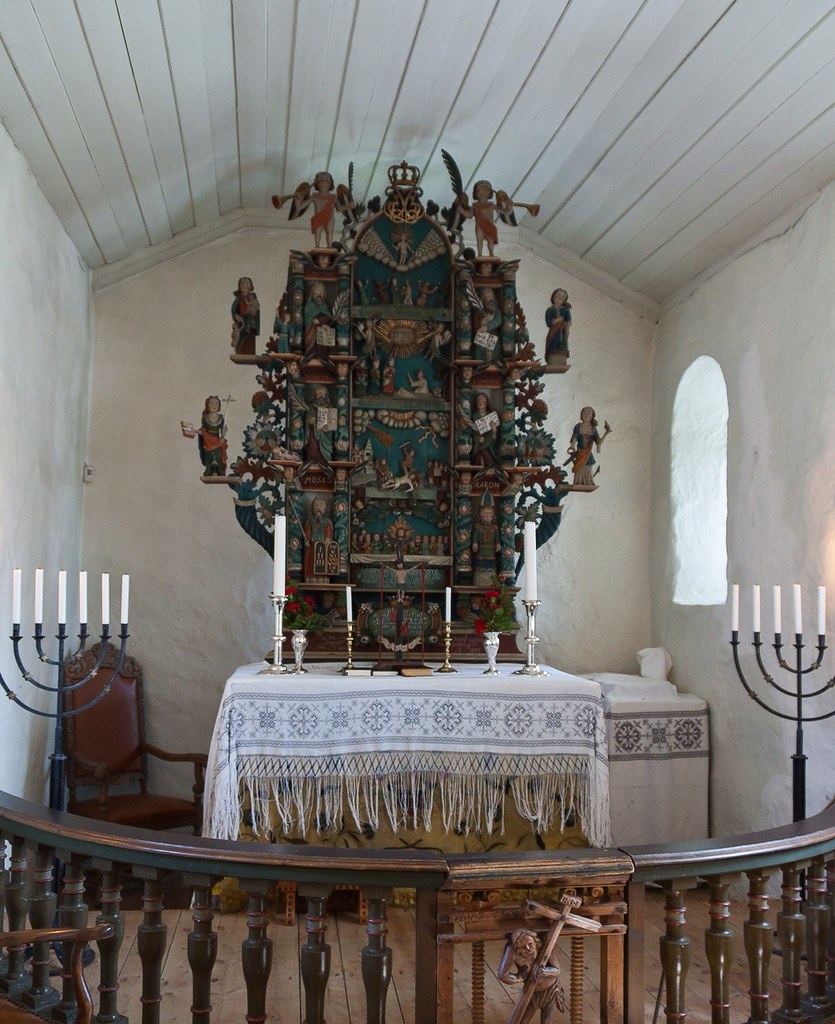
Above: Giske Chapel with the Altar carving dating from the 18th century.
On the island of Godoy we visited the little fishing village of Alnes and its lighthouse, situated on the windswept coast.
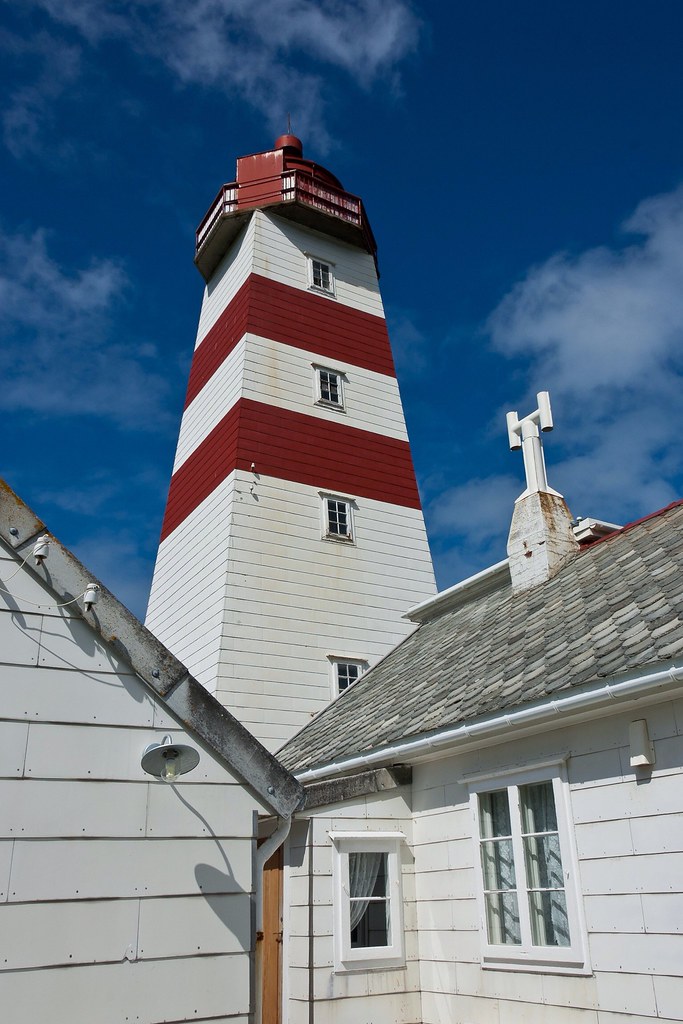
Above: The Alnes Lighthouse on the island of Godoy.
I hope you enjoyed this look at Ålesund. Next time we're off to the Mediterranean and Spain! I'm jumping between cruises to keep things fresh! Speak soon.

No comments:
Post a Comment